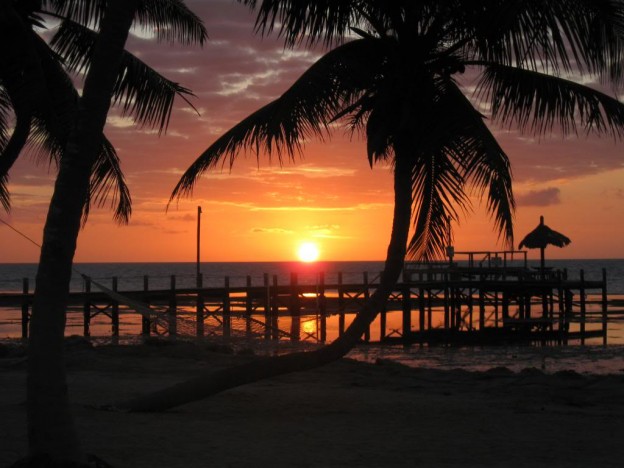It was many months ago when Ken cordially invited me to join him on a road trip to Florida for some hard-core fishing. Our focus on this trip would be to add as many new fish species as possible to our ever-expanding lifelists. Ken invested countless hours of research in the months leading up to our departure. This research would pay off in spades.
Did I bring enough gear?
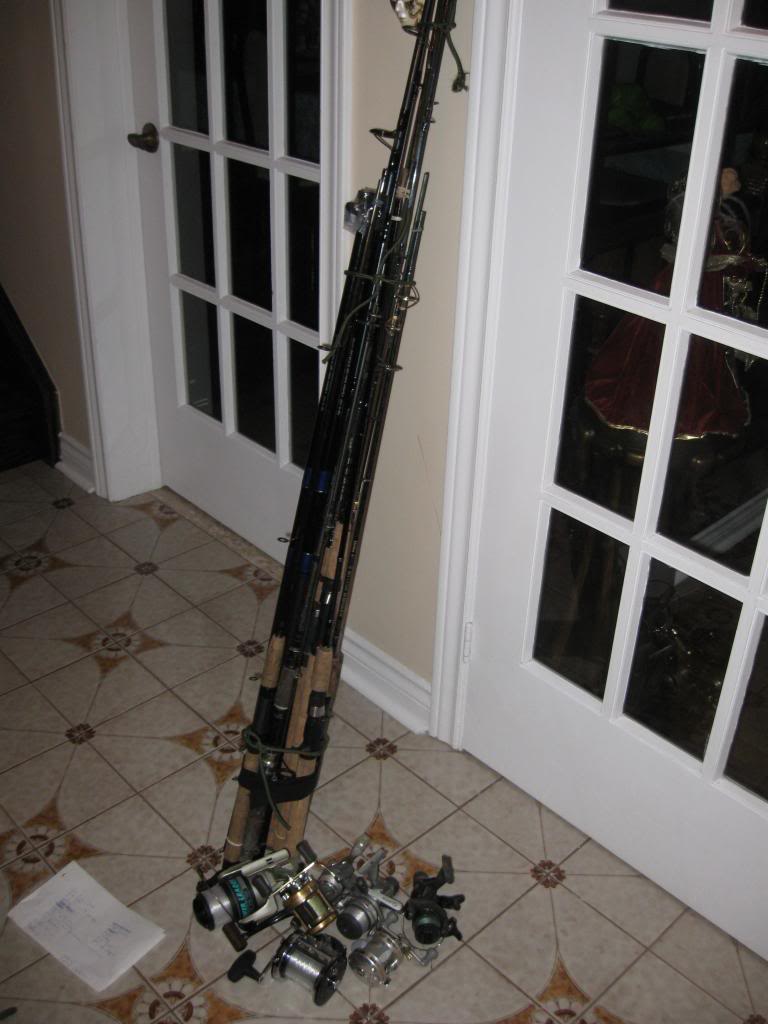
Tampa/Orlando
Heavy snowfall delayed our departure for Orlando. A hefty 24 hours later, we arrived at our first fishing destination in Tampa. Despite the cool weather and rain, young Jack Dempsey cichlids were eager to take our worms.
New Species #1 Jack Dempsey cichlid

Unable to locate our other target for this spot, the Rio Grande cichlid, we departed for Ken’s cousin’s house to spend the night.
Our plans for the next day were spoiled by unusually cold weather and unpredictable rain. In the morning, Ken and I took a walk around a tiny stormwater retention pond next to his cousin’s backyard. My jaw dropped when I spotted wild plecos were living in it (yes, the same algae-eaters that people keep in their aquariums)! Unfortunately for Ken and I, it seemed that these fish followed a strict diet that did not include any of the baits we had to offer. Too bad, it would have been so cool to catch a wild plecostomus!
Nevertheless, I was able to catch my second lifer of the trip out of this small pond. A nice golden shiner.
#2 Golden shiner
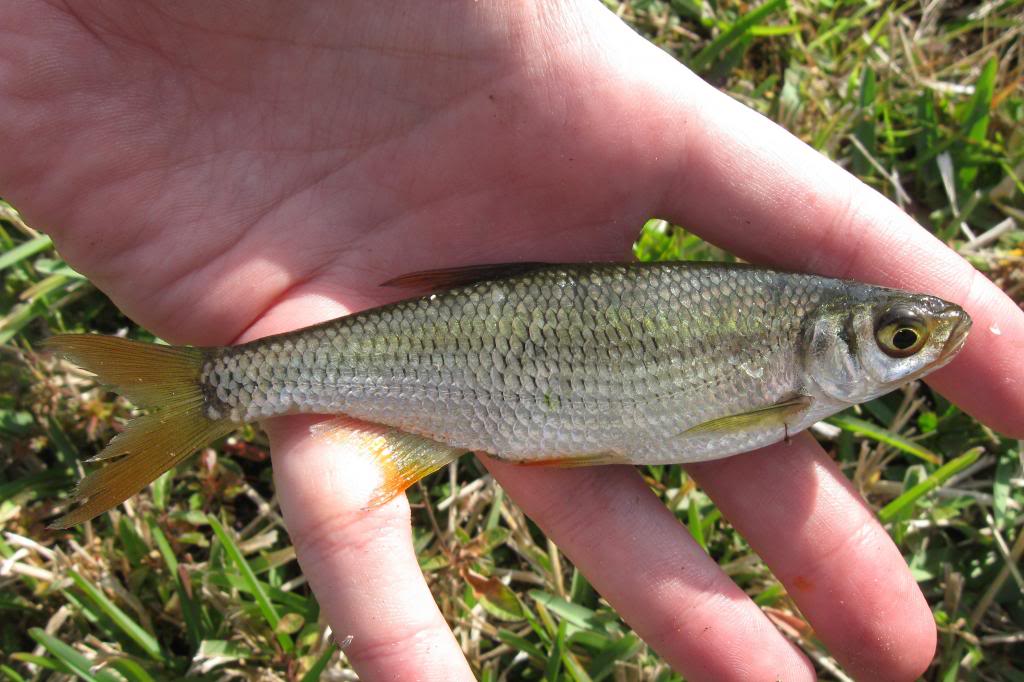
***
The weather finally cleared in the afternoon, allowing Ken and I to fish a pond just around the corner from his cousin’s house. Within minutes of our arrival, Ken’s niece started shouting in excitement. She was yelling out that she had hooked something big! And she wasn’t lying! At the end of her line was the biggest black crappie I had yet to see to date! There were quite many more where that one came from. We continued to consistently catch slabs of crappie until the sun set.

I also hooked into a lifer redear sunfish.
#3 Redear sunfish:

All the while at this pond, I was fishing a second rod rigged with a chunk of fish on two treble hooks. I was using two treble hooks in the odd case that I may connect with one of our higher-priority targets of the trip: the Florida gar. I allowed the first strong take on this bait to run for over a minute before setting the hook, but the hooks did not set. This led Ken and I to believe that this was in fact a gar that had picked up my bait. Gar have long, narrow and bony snouts that are difficult to get a hook into.
I had two other strong takes on this second rod, both producing wonderful 3lb bass that are apparently “average size” for this pond according to Ken’s cousin. Boy, fish sure do grow big in Florida!


Port Canaveral
While the rest of the gang paid a visit to the Kennedy Space Centre, I tried my luck with some saltwater fishing at Port Canaveral. The wind was fierce and fishing was slow. I saw a few dolphins. I was fishing about 4 rods simultaneously and managed only one lifer spot croaker after two hours of fishing.
#4 Spot croaker

I chucked out the spot croaker on my heavier rod rigged with two large circle hooks in search of a larger fish. The wind was so strong I didn’t even notice this had happened until about an hour later:
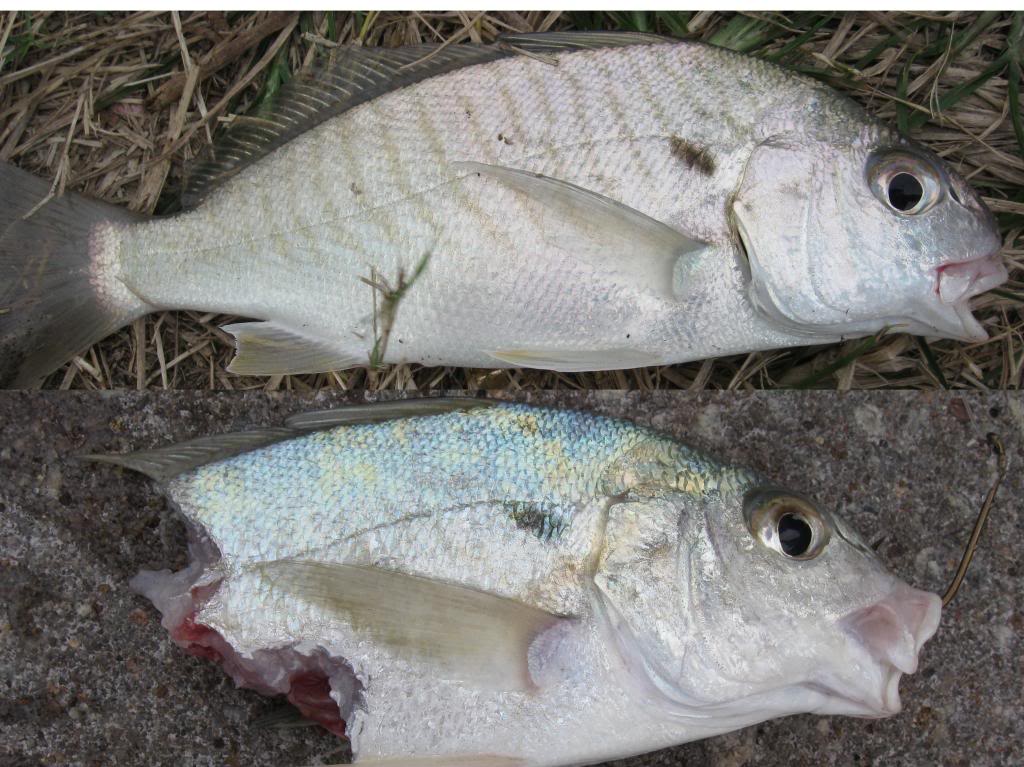
Scary stuff…. exciting stuff!!!! =D
Eventually, a gentleman beside me landed a small bluefish on a small, silvery plug. I began feverishly casting a shiny spoon in search of my first bluefish and came up with this one.
#5 Bluefish

At nightfall the water came alive with small breaching fish. I had thought them to be mackerel, but floating my sabiki rig for quite some time left me with just one more bluefish.

A lifer Gafsailtop catfish decided to round off an evening of slow fishing.
#6 Gafsailtop catfish


When the rest of the gang finished up at the Kennedy Space Centre, we began our drive to visit Ken’s uncle in Coral Springs.
Coral Springs
We awoke early the next morning to begin our quest for freshwater exotics. Spotted tilapia were spotted taking refuge under a dock structure and were an easy catch.
#7 Spotted tilapia

Ken was keen enough to notice a large butterfly peacock bass darting in under the dock to feed on these spotted tilapia. I used one as live bait around the dock structure, but the live bait remained untouched.
While I was fixated on catching my lifer butterfly peacock bass, wondering where all the small cichlids had buggered off to, Ken made an outstanding discovery. He had been poking around the rocks that lined the shorelines of the canal and came across the cichlid motherload! They were all hiding in the cracks in the rocks just inches from shore! The presence of larger predators must have led them to take refuge there.
#8 Mayan cichlid:
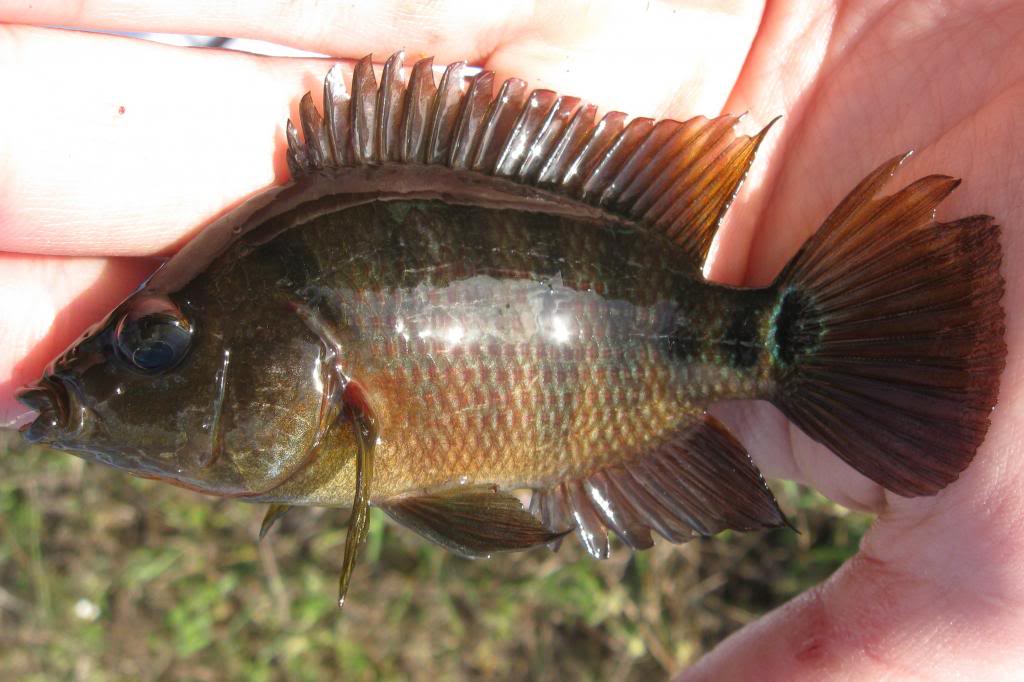
#9 Salvini cichlid:

***
Then we moved to a new spot that consisted of a series of small ponds connected by a series of culverts. I began fishing under the nearby culverts with a freelined live cichlid. Within minutes, I had a large, very dark fish nose up to my bait and then turn the other way! I shouted out to Ken, who came running over with his own freelined live cichlid. The fish eventually decided to take Ken’s bait after refusing mine, probably because Ken had positioned his bait deep under the culvert where the predator felt safer. The fish ended up being Ken’s lifer jaguar guapote.
I fished the rest of the area hard in search of another jaguar guapote. Despite seeing quite a few large, dark cichlids, nothing wanted by bait. I fished bread for a school of tilapia, but they did not want to bite either. There were several grass carp nosing around near shore, but they spooked easily upon approach. In search of a grass carp, I sent out two rods with bread on the bottom while I continued to poke my bait around for large cichlids. Despite fishing hard for over two hours, the fish would have none of it! I was losing focus! Not even the bass were biting.
I began chucking my trusty Rapala F7 around the culverts and lilypads. I attracted the attention of some cichlids who were chasing my lure. Finally, one of them struck! A nice Mayan cichlid:

When I was off fishing a different pond, one of my bread-baited rods began to ring. Ken picked it up for me and we ended up with a Southern brown bullhead:

We moved on to fish the canals near Ken’s uncle’s place in search on Cobra snakeheads, but we didn’t see any. Ken pursued a lonesome Florida gar for a while, but it did not want to bite. The cooler weather the area had received in the last week must have shut down the fish.
***
The next morning we headed out to a spot to target the gorgeous Midas cichlid. Unfortunately, the area was now quite devoid of fish save for one nice butterfly peacock bass that Ken spotted. Along the way to our next fishing destination, we spotted another lonesome Florida gar and tried to tempt it with worms to no avail.
Ken had several spots marked on his GPS along the Tamiami trail. Upon arriving at one of these spots, I literally lost my mind. The water was boiling with active fish. We parked and I jumped out… just 15 feet from an 8-foot alligator!
Ken took note that the active fish were Florida gar. We both became giddy with excitement. All the time we had spent focusing on single Florida gar and chasing them around now seemed so silly. There were countless gar right at our feet! However, it would involve braving the alligator.
We began chucking crankbaits and received a few hits and zero hooksets. While Ken continued to fish crankbaits, I moved over to a nearby pond and caught a bluegill and spotted sunfish on my trusty Rapala F7.
#10 Spotted sunfish

Not having much luck fishing crankbaits for the gar, we cut up the sunfish for bait and rigged chunks on single treble hooks. This strategy proved far more effective with our baits being picked up every single cast! Hooksets were hard to find, but it is safe to say we had a blast!
#11 Florida gar



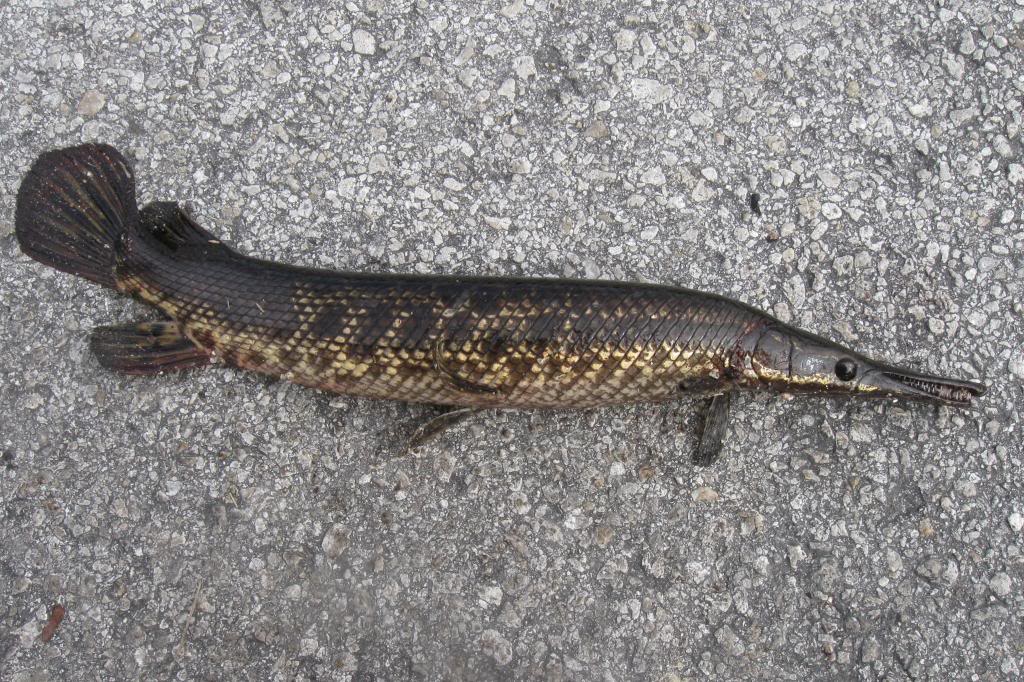

The alligator took notice of our fishing success and decided to crawl over in order to steal our next fish. While the gator crowded our fishing spot, we fished the nearby pond. I was casting my F7 in search of aggressive cichlids, but instead I was catching bass nearly every cast. I switched over to fishing a speck of worm on my micro-sized Tanago hooks and caught my lifer eastern mosquitofish as well as countless small spotted sunfish.
#12 Eastern mosquitofish

The purple iridescence was a beautiful sight on these small spotted sunfish.

Moving further along the highway, we arrived at another promising area. I had spotted a few large, dark fish that did not look like bass and there was a school of tilapia swimming about. Ken and I poked around in the weeks for new species, but we connected with nothing but more spotted sunfish. They were becoming an annoyance. I tried fishing worms, then bread, strawberries, and even oranges for the tilapia, but they ignored all of my offerings. In the meantime, Ken entertained himself with numerous Florida gar. By numerous, I mean that the Florida gar were so thick that they were stacked on top of each other in some areas. Absolute gar insanity. A moment I’ll never forget! I watched their hunting strategies with great curiosity. Some would sit still in the shallows to mimic a branch, then strike when a school of minnows passed by.
We moved on, in my books there’s always time for chickens!
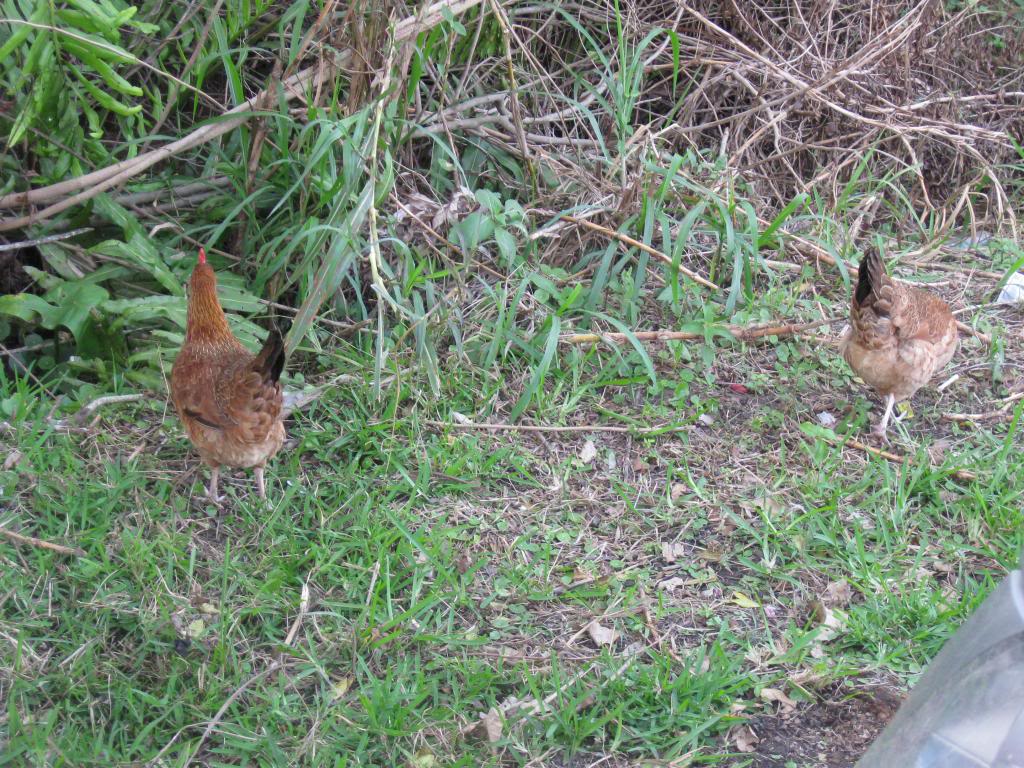
We tried a new spot on the way back and Ken hooked into a decent-sized bowfin. We did not have a net so it snapped off when we tried to land it.


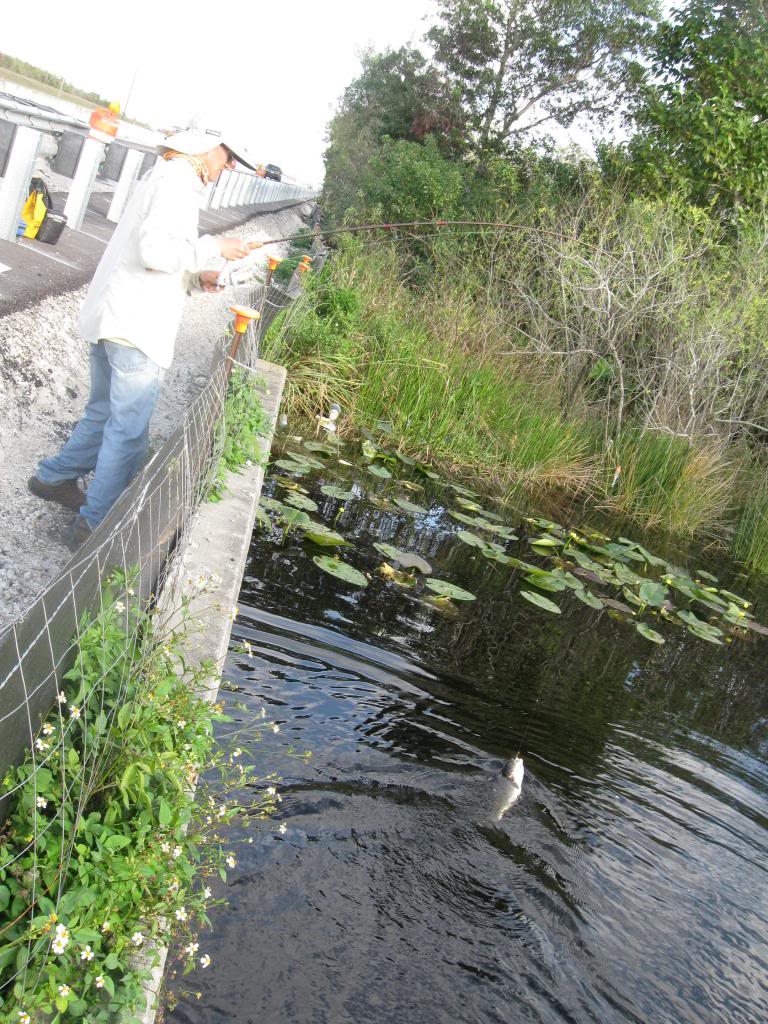
With the sun setting we tried one final spot. The weeds near shore produced yet more spotted sunfish, so I began chucking my trusty Rapala F7 across the rows of lilypads. A few bass later, I hooked one with a particularly pronounced white belly. It wasn’t until I was unhooking it when I saw the tell-tale spot on its tail! I yelled out to Ken “Peacock bass!”. I had finally caught my lifer butterfly peacock bass.
#13 Butterfly peacock bass

Miami
After a wonderful lunch with Ken’s family the next day, it was time for us to begin our drive to the Keys. On the way there, we stopped by a spot that Ken knew to hold Midas cichlids.

I had mentioned to Ken earlier that both Mayan and Midas cichlids were high up on my wish list. With this in mind, I nearly lost it when we immediately noticed a school of brightly coloured midas cichlids swim up to us as we approached the water! Ken was rigged up first and tried with a worm, but the fish did not take interest.
Having bought a loaf of bread for just this situation, Ken suggested I chuck some bread into the water. The fish immediately began gobbling up the sinking bread! After my experiencing toying with impossible tilapia the previous day, this was quite the sight to see. Ken promptly hooked and landed his first ever Midas cichlid.
This commotion seemed to have spooked the school, so it took me some time to find where the fish had moved to. I found that the fish to be quite picky buggers! They would eat chummed bread as it fell freely though the water column, but would somehow notice that my bread was not sinking and drifting naturally! Either that or they could see my 8lb mono line. The cichlids would nose right up to the bread and turn the other way. I even tried presenting the bread out of my line of sight in case I was spooking the fish. I switched my leader to 4lb flurocarbon in hopes of improving my chances.
I began casting further away at a school of suspended midas. On one drop of the bread, I had a strong take from a strong fish that immediately snapped my 4lb leader! Ken mentioned that it may have been a grass carp! Within 10 minutes after retying my 4lb leader, this happened to me yet again!
One particularly striking Midas cichlid eventually made an error and took my bread:
#14 Midas cichlid

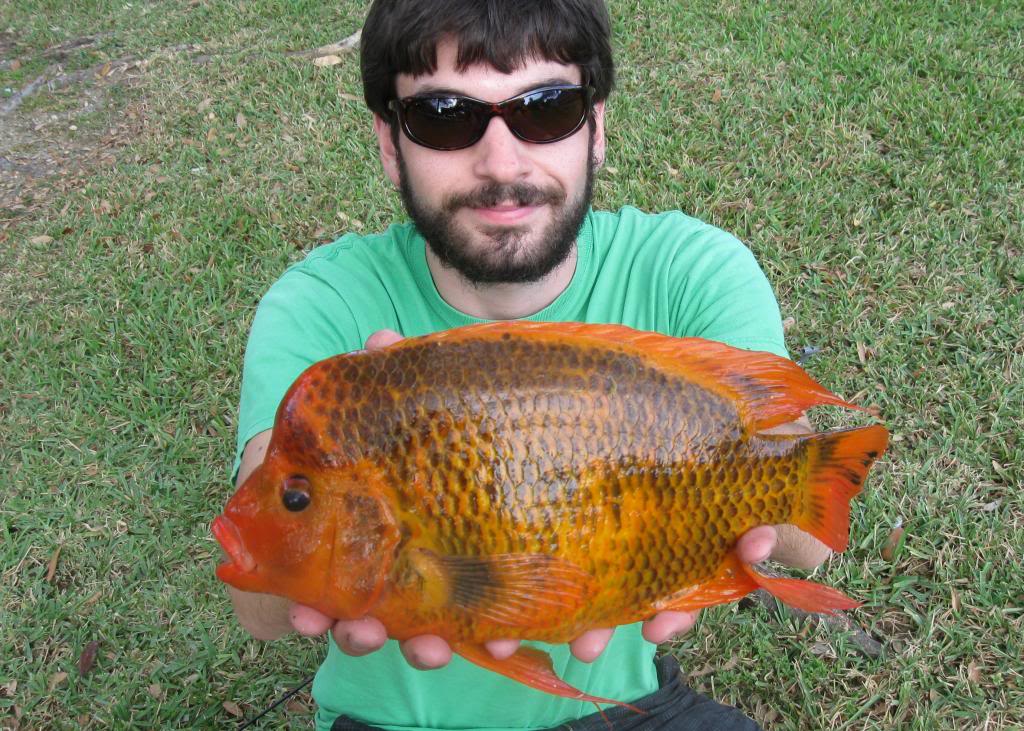
And then I was full-steam ahead for targeting grass carp! I tied myself a hair rig on 8lb mono and threaded a nice chunk of white bread onto the hair. It wasn’t long before I had hooked into another grass carp as the bread dropped through the water column. This time, I was ready for the strength of the fish and had my drag set appropriately!
#15 Grass carp
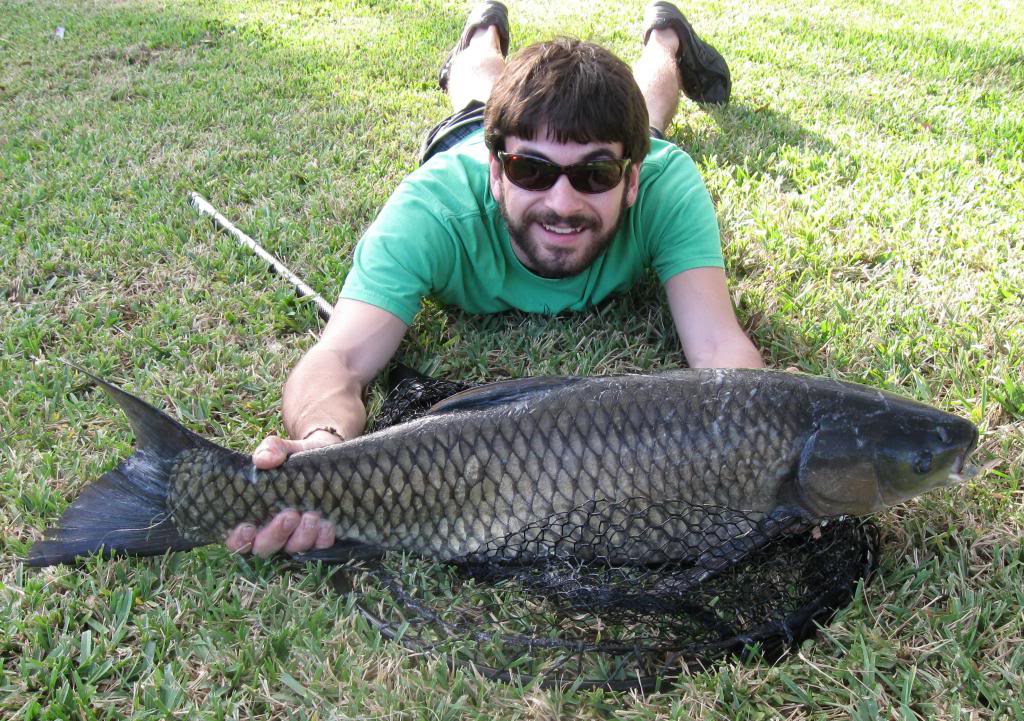



I was truly ecstatic about this catch. At about 15 pounds, this was one of my largest fish to date. I had attracted quite a bit of attention, with park-goers coming over and asking us about the grass carp. Most people had no idea fish this size lurked in the canals! But they’re everywhere! As Ken would soon demonstrate with his own mammoth 30lb grass carp catch, mine was only a baby!
Rounded out the evening with a scrappy Mayan:

The Keys
With the sun setting, we began our drive to the Keys. As we neared our motel, we stopped in a grocery store for some ice and were pleasantly surprised to find that they also sold bait! Only in the Keys does your neighbourhood grocer sell bait!
We spent most of the night setting up our heavy gear and tying wire leaders for particularly toothy targets.
What we woke up to the next morning:


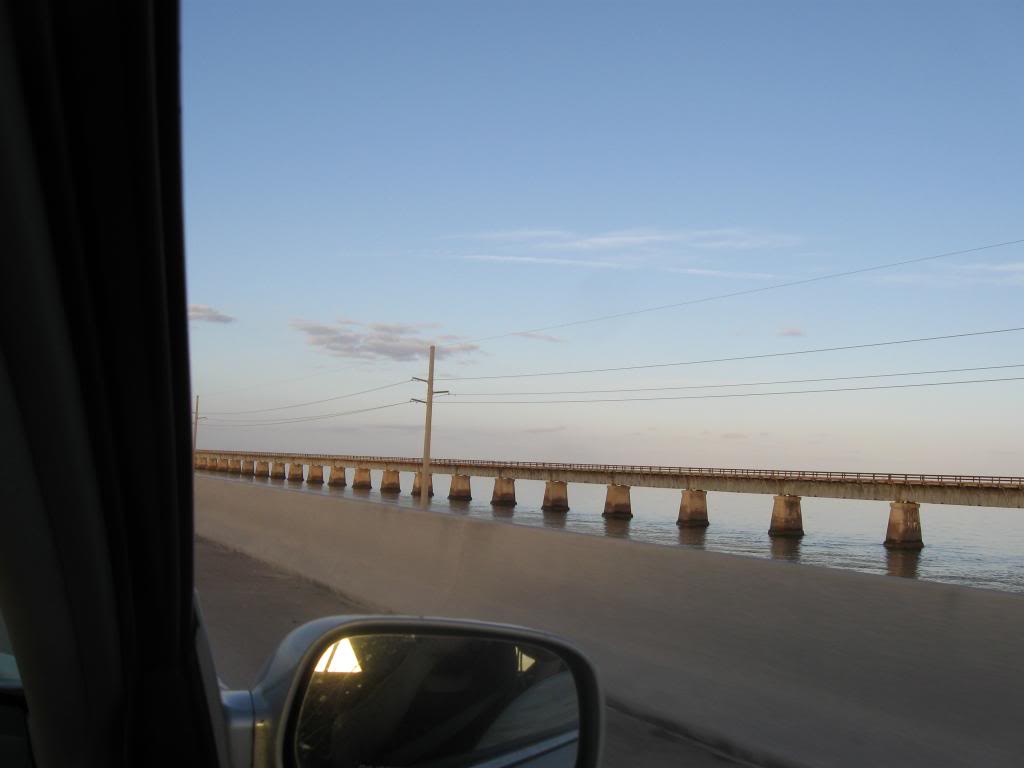
Arriving at our first saltwater fishing spot, I was like a kid in a candy store. Everything would be a novel and exciting catch! I was quick to send out two squid-tipped Carolina rigs. The first was over a semi-rocky flat and the other was right into a rocky reef area. The first rod received immediate and persistent porgy action:
#16 Littlehead porgy:
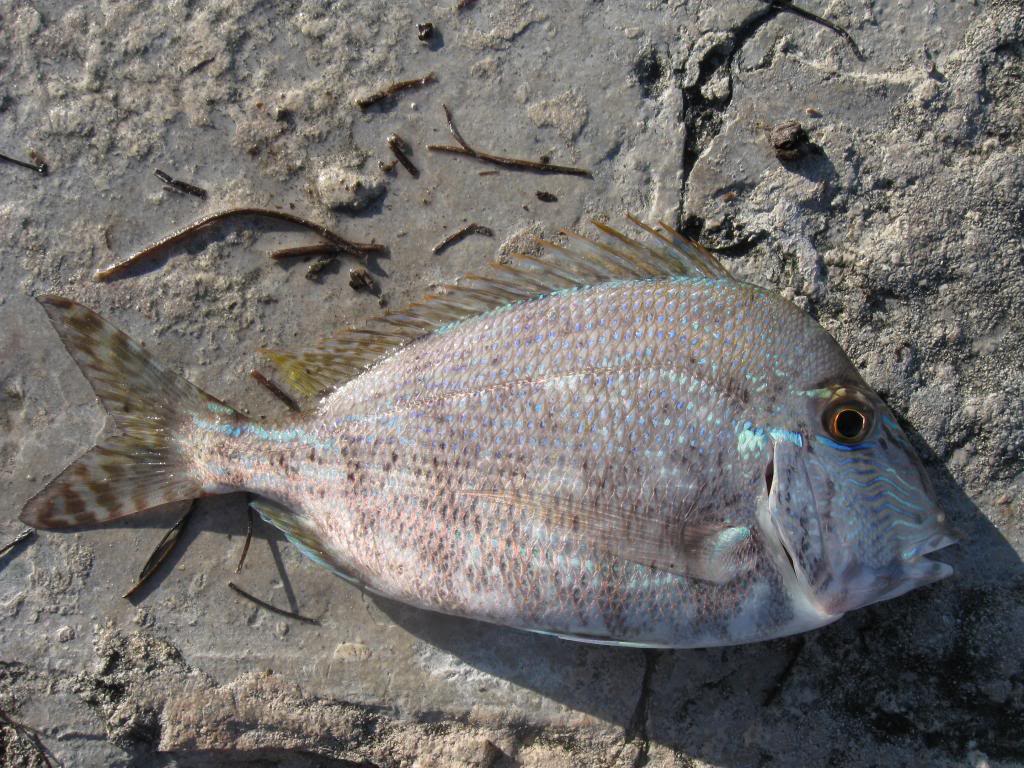
And #17 Jolthead porgy:
(Edit March 28, 2016: After some consultation with an experienced porgy dude, I will be calling this one as Sheepshead porgy)
Sheepshead porgy
I was very focused what was out there, but forgot to check right at my feet! I looked down to find a multitude of micros just waiting to get a spot on my lifelist.
#18 Hairy blenny:

#19 Dusky damsel:

There were also Sergeant Major Damselfish, but I was unable to hook one. They were small enough to nibble around any hook I threw at them. When I used a small bait so that they would be forced to engulf the hook, they simply ignored the bait.
In the midst of the micro action, my bells on the rocky reef rod started jingling. I rushed over and felt something take my bait right into the rocks. It may have been a good fish or just simply weeds. I wrestled with the line a bit, but it was quickly fowled with more weeds. I pulled it free and found nothing on the hook. Next time, I will ensure to fish rocky reefs with my rod in hand so that I can quickly muscle fish off the bottom before they take to a crevice.
Ken began fishing over the rocky reef with a dropper loop and was quick to secure a very cool southern puffer. He also hooked into a screamer that dropped the bait after a few seconds… bummer!
In the meanwhile, I was fishing a squid-baited sabiki rig over the flat. Slippery dick wrasse were common:
#20 Slippery dick wrasse:
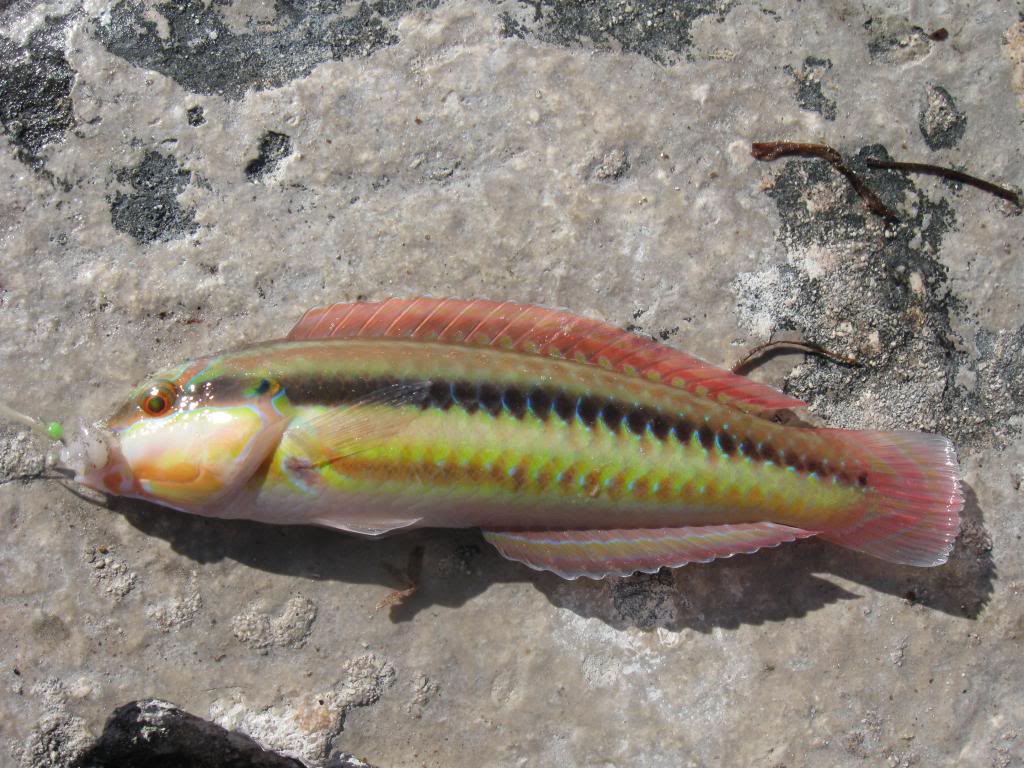
And I crossed paths with this fantastic houndfish:
#21 Houndfish

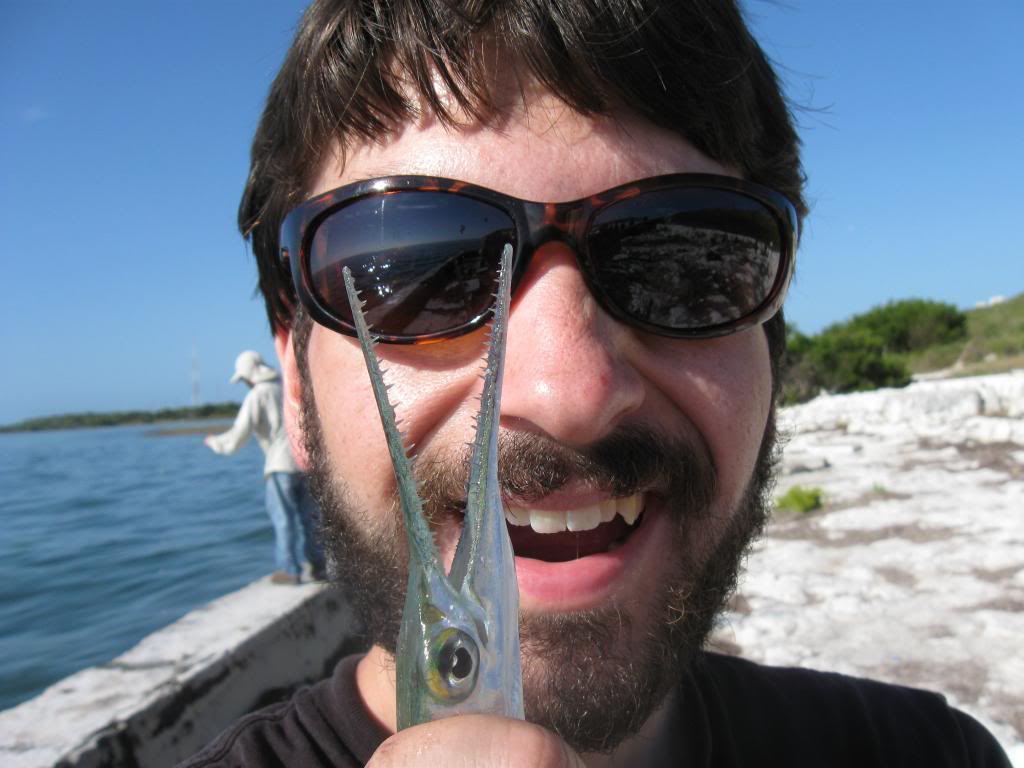
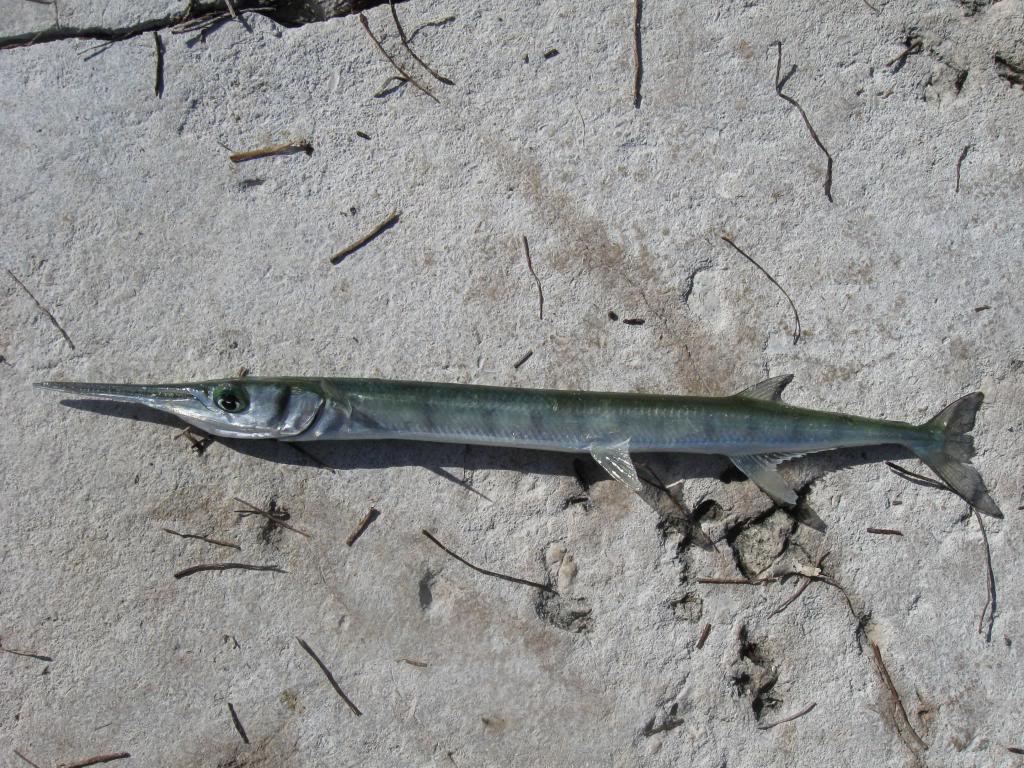
The sabiki produced quite a few fascinating results:
#22 French grunt:
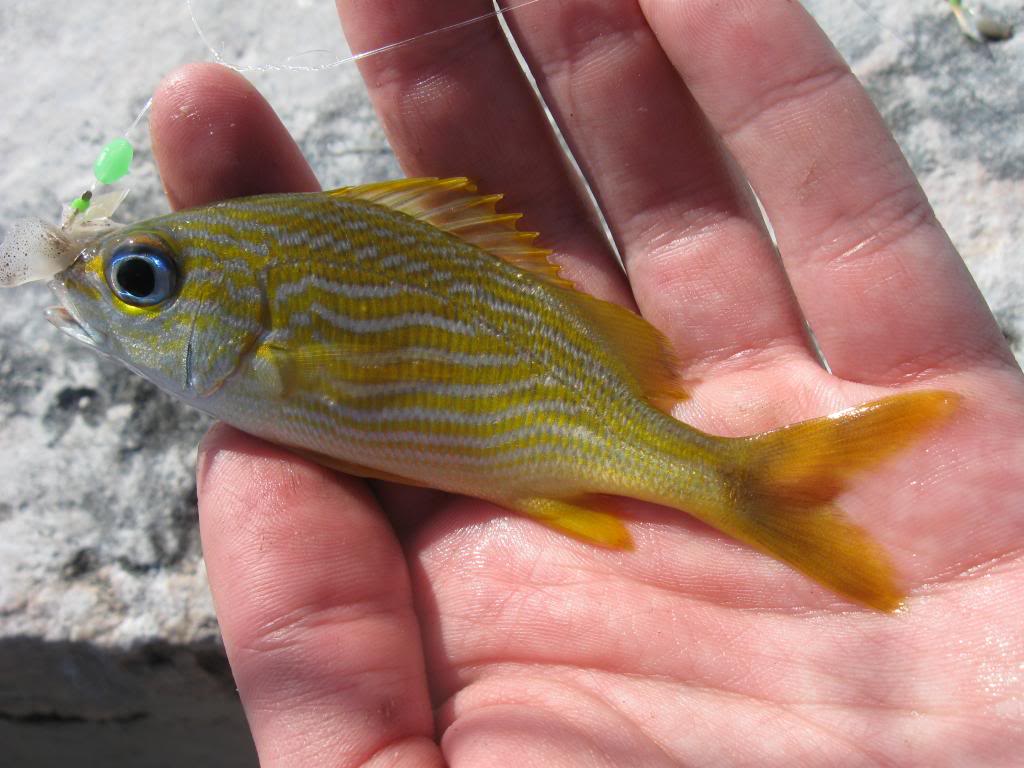
#23 White grunt:

#24 Lane snapper:
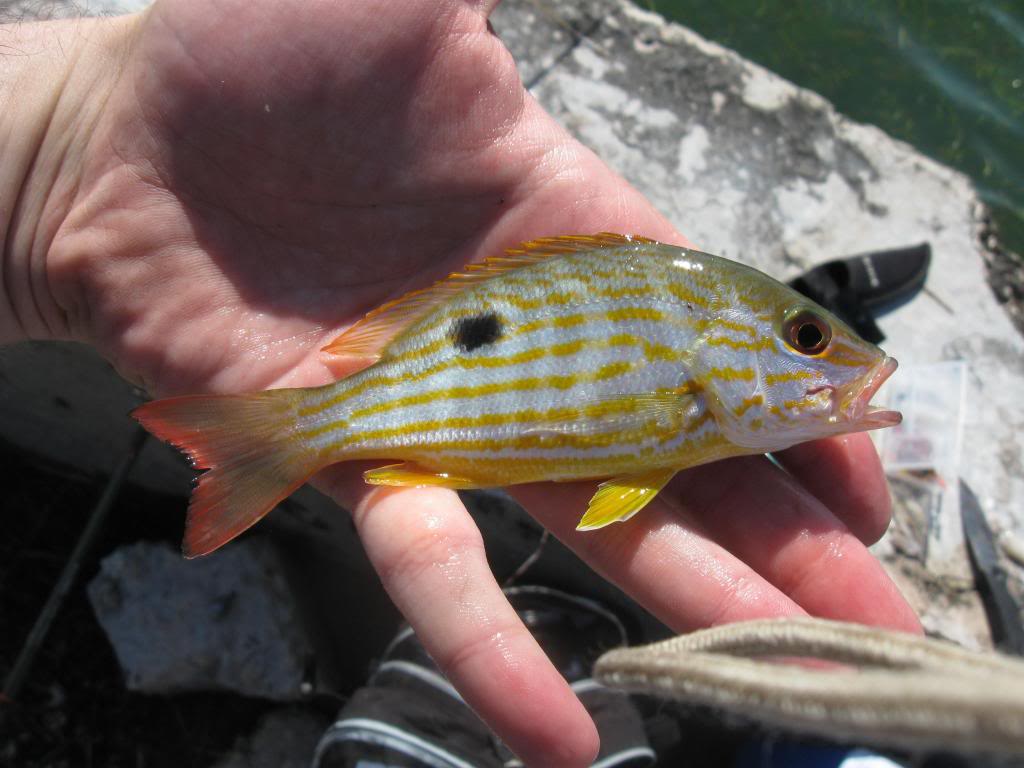
Once we were confident in the amount of grunts we had in our bait well, we moved on the chase the big boys.
***
Our next spot was one suggested to hold a multitude of shark species as well as goliath grouper. Surely an exciting “promised land” in any anglers books!
Our “heavy” rod was rigged with a nearly uncastable 8oz egg sinker. I served as the fish’s bait delivery man, dropping the bait down to the depths from the nearby bridge. We just let our big bait soak as we proceeded to pursue other things.
Despite watching schools of bait scatter in the distance, the spot was relatively dead. I had a couple of solid rips off my clicker, but the bait was consistently dropped by the fish before the hook set.
As the sun set, we began to run low on bait. We began casting bits of squid towards nearby pilings in search of more bait. I was lucky enough to connect with a schoolmaster snapper:
#25 Schoolmaster snapper

The water was alive with glowing green worms. I’ve never seen anything like this before, it was surreal.
Ken sighted an eel and managed to hook it, but the eel cut the line (30lb mono… yikes!!) before I could clear out of the landing zone.
Reeling in the heavy rig, we noticed that our bait had been left untouched. Disheartened by the lack of action in the promised land, we retreated for the night eager to hit this morning’s spot again tomorrow.
***
The next morning we paid another visit to yesterday’s morning spot. We arrived to find the water boiling with ballyhoo but could not get them to bite our presentations. I was quick to hook a puffer:
#26 Bandtail puffer


Yesterday, Ken had been able to sightfish a cowfish hanging around the ledge by our feet. Today was my turn. I spotted a pair hanging around near my feet and promptly tossed in a dropper loop with big chunks of squid to keep them in the area. However, I found that they would eat all the bait around the hook and avoid the hook completely. When I tossed in a smaller sabiki rig, they ignored it entirely and kept their attention on eating the larger bait. It wasn’t until I removed the larger bait from the water that they turned their attention to the smaller sabiki rig:
#27 Scrawled cowfish

A truly cool catch! The cowfish is a boxfish and almost fully encompassed by a bony shell. It’s a fish-in-a-box!!

That wasn’t the last cowfish of the morning:

Ken did quite well this morning. He managed an epic yellow jack and followed that up with a sizeable southern stingray. Two hard-fighting fish back-to-back. I was jealous and eager to hook my own sizeable fish!
Wrapping up at this spot, we moved on to fish from a nearby bridge.
***
We arrived at the bridge to find several anglers using the current from the incoming tide to drift baits under an adjacent bridge. They were doing so-so and we had a better idea. We dropped our baits down right by our feet into the breaks in the current. The action was non-stop:
#28 Porkfish 
I took a break to cast a cut grunt out to sea on what I thought was an adequate shark rig. Then, I went back to the action at our feet:
Another slippery dick

#29 Sailor’s choice grunt

#30 Gag grouper
Edit April 12, 2016: Thanks to some ID assistance, I’ve learned this fish is a scamp grouper. 
#31 Black grouper
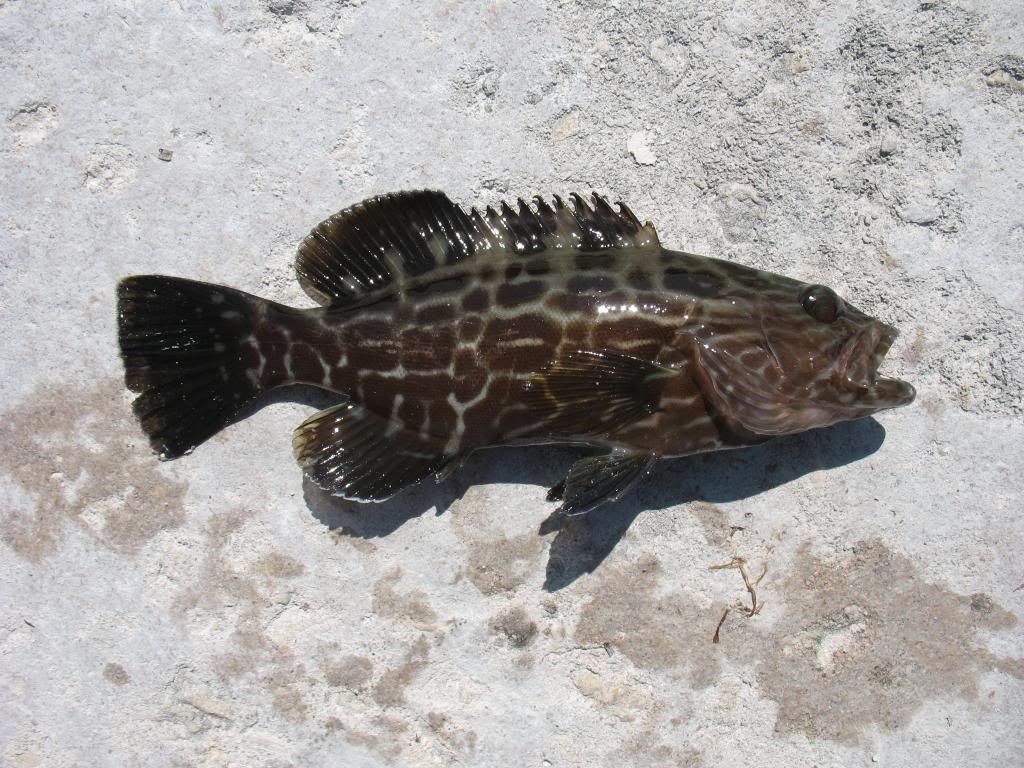
I caught a black grouper, and I was changing batteries on my camera when my clicker went off with a ferocity that I’ve never heard before. I ran over to my rod to find it quivering with the strength of the fish on the other end of the line. I engaged the reel and felt sheer, unstoppable force for about 2 seconds and then a gentle POP as my 40lb mono was cut like butter. I looked up and out to sea and happened a glimpse of the culprit. The dorsal fin of the shark I had just hooked was visible near the surface of the water… and it wasn’t a small one. At least 5 feet in length.
Eager to get an in on the shark action, Ken and I set up the three heavy rigs that we had. Ken would later get another pick up and break off, just as I had. This was frustrating because the heaviest of the rods fishing 100lb mono didn’t receive any action at all. It’s almost as if the sharks could sense the thicker leader material of the heavier rod and avoided it entirely. Very frustrating.
There was saving grace. At one point in the day, I was spotted within 30 minutes of each other: 1) A school of 100lb tarpon 2) A group of spotted eagle rays and 3) a massive 8ft bull shark circling my balloon. I was a bit giddy to say the least.
I was eager to hook into one of these tarpon and Ken suggested that I catch one of the abundant needlefish in the area to use as bait. Ken had perfected a method for these needlefish and I quickly caught one. I had assumed that it was the same species that I had caught the previous day, but thankfully I took a picture regardless. It turned out to be a new species for me!
#32 Redfin needlefish:

The tarpon would have none of it though, and the current soon reversed rendering them unreachable from our position.
When the tide changed over, we moved over to the other side of the bridge to fish. Just as we expected, the fish had moved over to the other side of the bridge to take shelter from the reversed current!


We fished through the night and Ken produced a few fascinating catches such as an oyster toadfish. Unfortunately, save for a few rips on our heavier rods, we had no further sharky visits.
In the darkness of the night, I decided to try and catch one of the eels that we suspected were living in and around the bridge pilings. After the events of the previous day, I fished with a 5/0 circle and a wire leader. I let a fish take the bait and waited patiently for it to swallow… but what I got back was a garbled, tangled, mess of twisted wire… OK these eels are nasty. Next time!
At one point in the night, Ken’s shark rod went off with a decent run. Ken hadn’t heard the clicker and I was fighting the fish by the time he paid a visit. It was a keeper-size mangrove snapper that would make a delicious meal for us in the coming day.
With sun rising the next morning, I went back at it with a second wind. I had sighted a pair of filefish at one of the pilings and I was determined to hook into one. This time, my efforts succeeded:
#33 Scrawled filefish (my favourite fish of the trip!!)


These things have breathtaking colouration:

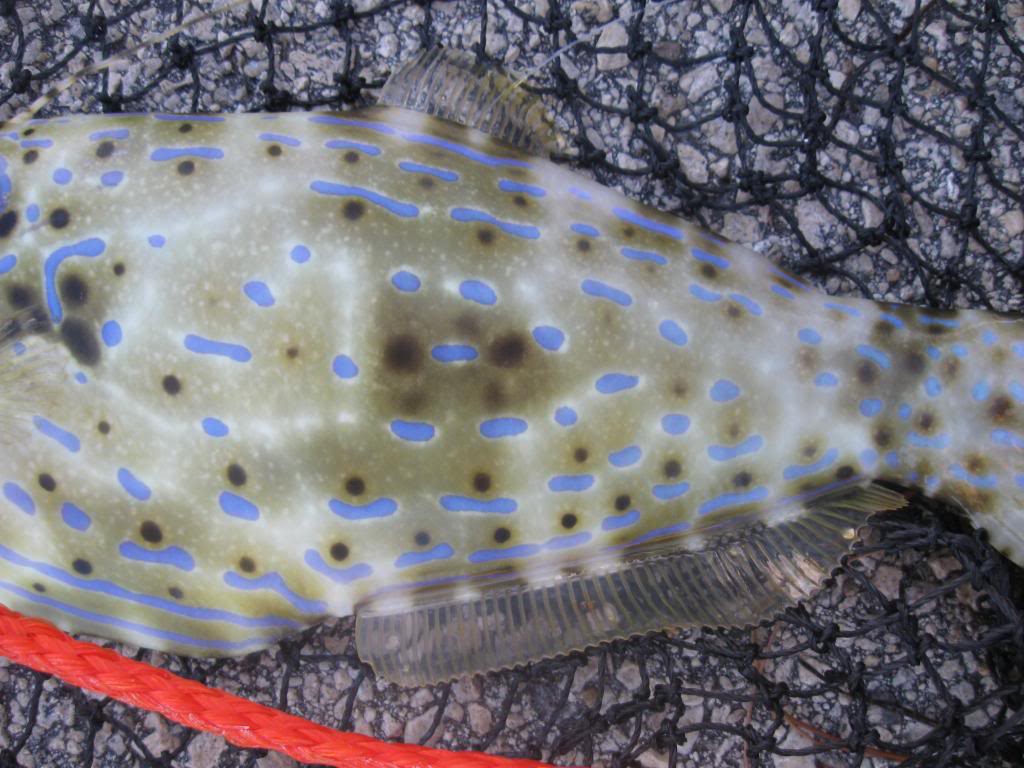
I also managed to hook two parrotfish near the pilings:
#34 Blue parrotfish

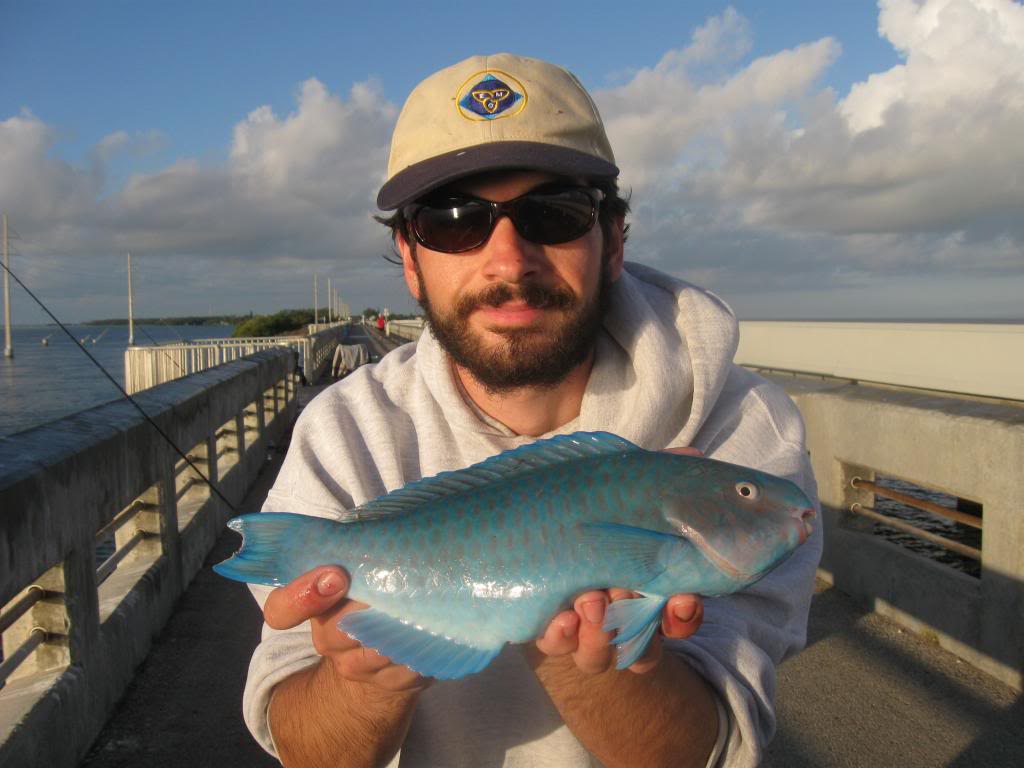
Adorable fish, this

#35 Bluestriped grunt

And a nice Bermuda Chub to round out the morning:
#36 Bermuda chub
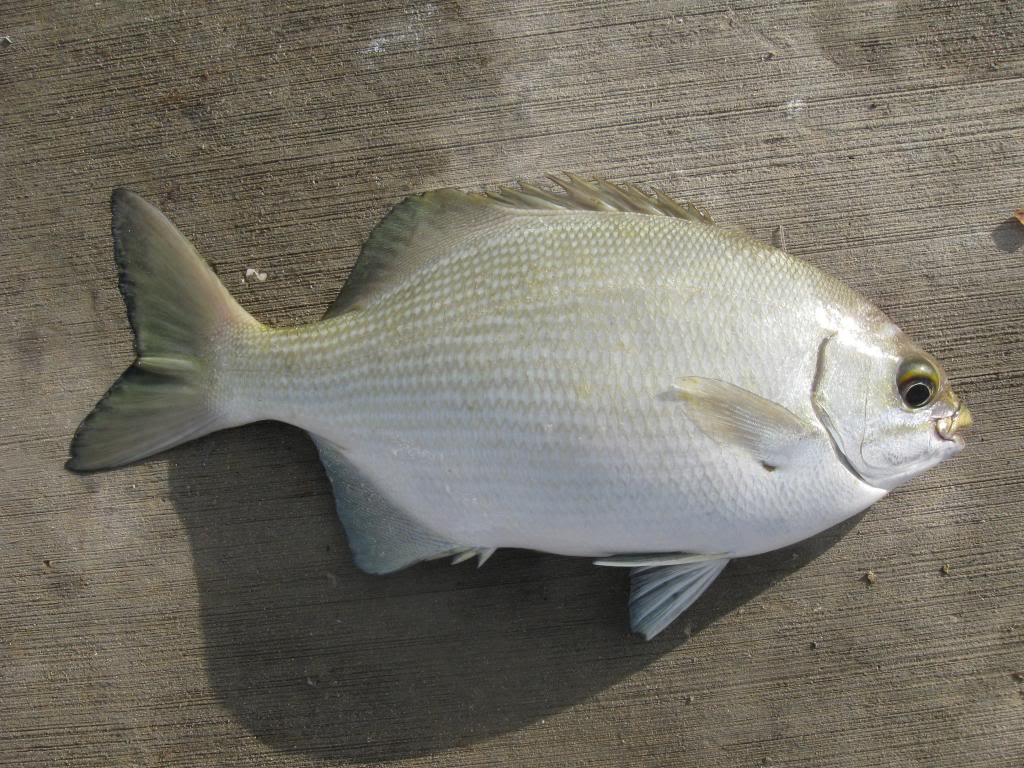
Ken mentioned that these chub are usually vegetarian, but mine bit on a cut up piece of grunt!
The cowfish came to play again:

A small, but still lifelist worthy yellowtail snapper:
#37 Yellowtail snapper

Finally, it came time to wrap up our epic saltwater adventure and return to Coral Springs.
Coral Springs
Upon arrival in Coral Springs, we took advantage of the one hour of daylight we had remaining by hunting for snakeheads at a nearby canal. Ken’s choice of lure and casting technique rewarded him is long-sought cobra snakehead while I was left waiting until my next trip down to obtain this target.
For dinner, Ken’s uncle prepared the weighty mangrove snapper that we had caught the previous day. Fresh fish is a delicious taste I can rarely experience.
After one final meal with Ken’s family the next day, we began our long drive back to Orlando.
Tampa/Orlando
Back in Orlando for our final day of fishing, I woke up early in the morning to give the plecos one final attempt. It was quite chilly in the morning and the sun was hidden behind clouds, so I wasn’t surprised when I didn’t see very many of them. The ones I did see completely ignored my green pea bait.
We checked out a spot near Tampa that held Rio Grande/Texas cichlids. We spotted these targets as well as sailfin mollies and a species of mullet, however bites were few and far between. Ken managed a bite from a Rio Grande cichlid, but the fish pulled the hook in the weeds. Bluegills were abundant and never failed to annoy us with their eagerness to bite our hooks.
We gave the salt one final attempt at a nearby pier. The problem was that we had no saltwater bait! Ken managed to shuck a few oysters that were lying on the ground, but we baited our sabiki rigs with plain ol’ worms. I had no idea whether fish in the saltwater would be tempted to bite worms!
Our efforts did prove successful and we both caught our lifer silver perch:
#38 Silver perch
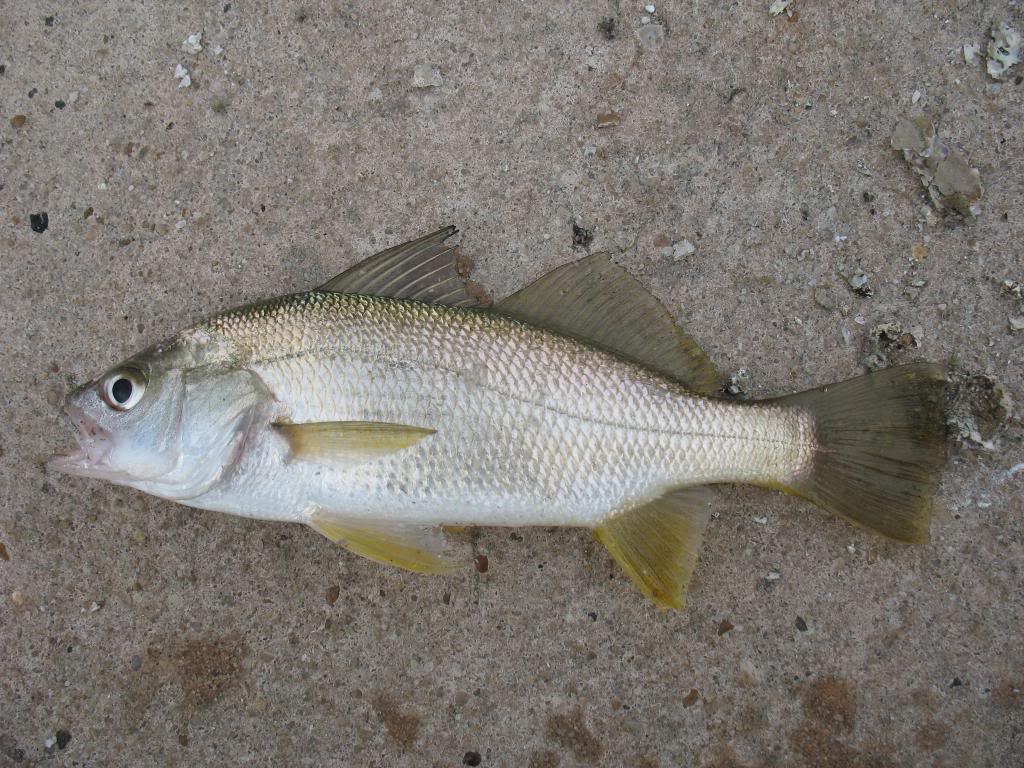
Ken moved on to catch a horse-eye jack and then we moved to a spot that was loaded with pinfish to bag me a lifer:
#39 (oh so close to 40) Pinfish
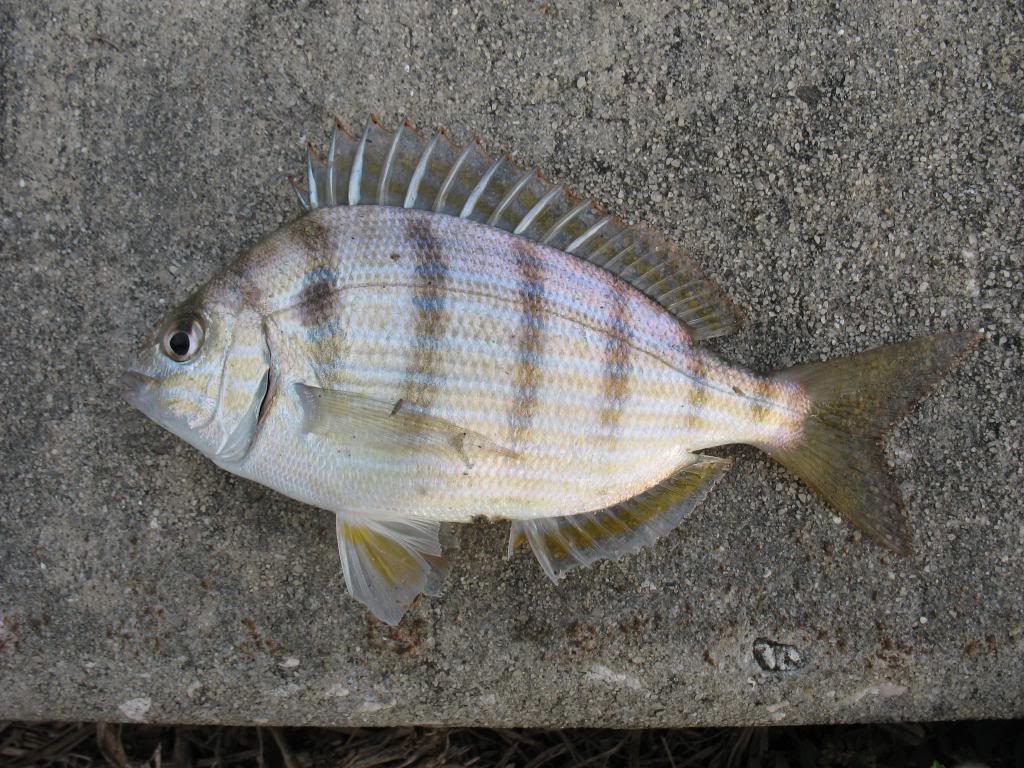
These would make perfect shark bait, but our time was up! We headed for home for the final rest before our departure early next morning.
Upon return, Ken reminded me that I had indeed caught a mangrove snapper from one of the bridges down in the Keys. There was my 40th new species of the trip, Mangrove Snapper!

And there we had it. I had bagged 40 new species in 11 long days. My pricey Florida licences are still valid and I can’t wait to do it all again.

